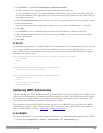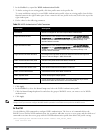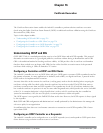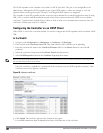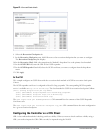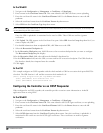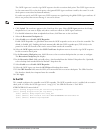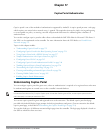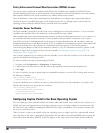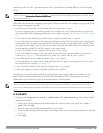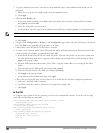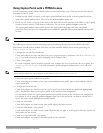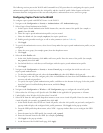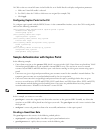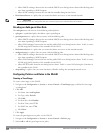
DellPowerConnectW-SeriesArubaOS6.2 | User Guide CaptivePortalAuthentication | 233
Chapter 17
Captive Portal Authentication
Captive portal is one of the methods of authentication supported by ArubaOS. A captive portal presents a web page
which requires user action before network access is granted. The required action can be simply viewing and agreeing
to an acceptable use policy, or entering a user ID and password which must be validated against a database of
authorized users.
You can also configure captive portal to allow clients to download the Dell VPN dialer for Microsoft VPN clients if
the VPN is to be terminated on the controller. For more information about the VPN dialer, see Virtual Private
Networks on page 271.
Topics in this chapter include:
l "Understanding Captive Portal" on page 233
l "Configuring Captive Portal in the Base Operating System" on page 234
l "Using Captive Portal with a PEFNG License" on page 237
l "Sample Authentication with Captive Portal" on page 239
l "Configuring Guest VLANs" on page 245
l "Configuring Captive Portal Authentication Profiles" on page 246
l "Enabling Optional Captive Portal Configurations" on page 250
l "Personalizing the Captive Portal Page" on page 254
l "Creating and Installing an Internal Captive Portal" on page 256
l "Creating Walled Garden Access" on page 265
l Enabling Captive Portal Enhancements
Understanding Captive Portal
You can configure captive portal for guest users, where no authentication is required, or for registered users who must
be authenticated against an external server or the controller’s internal database.
NOTE: While you can use captive portal to authenticate users, it does not provide for encryption of user data and should not be used
in networks where data security is required. Captive portal is most often used for guest access, access to open systems (such as
public hot spots), or as a way to connect to a VPN.
You can use captive portal for guest and registered users at the same time. The default captive portal web page
provided with ArubaOS displays login prompts for both registered users and guests. (You can customize the default
captive portal page, as described in "Personalizing the Captive Portal Page" on page 254)
You can also load up to 16 different customized login pages into the controller. The login page displayed is based on
the SSID to which the client associates.



